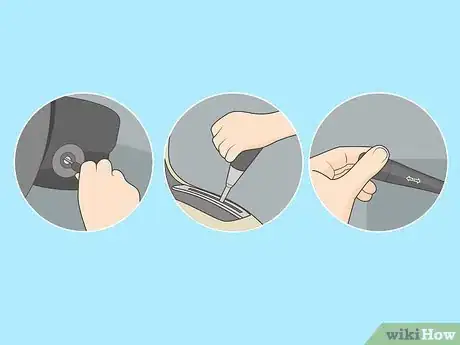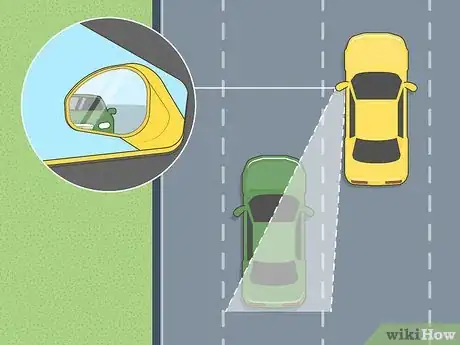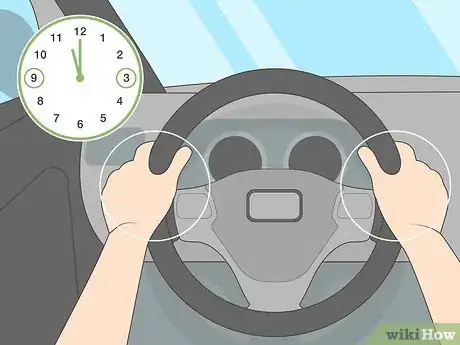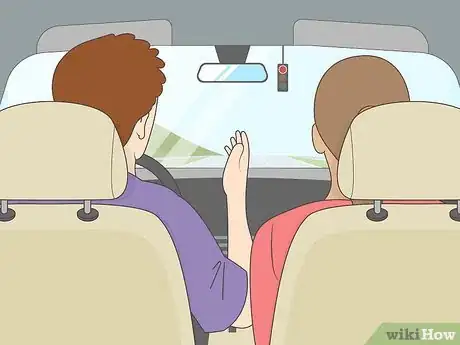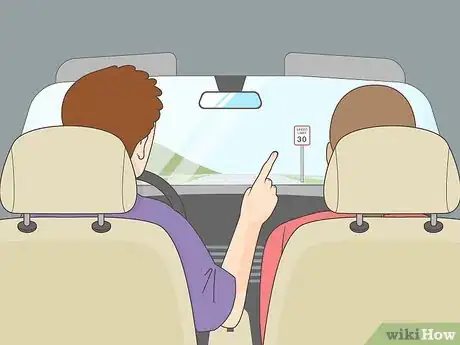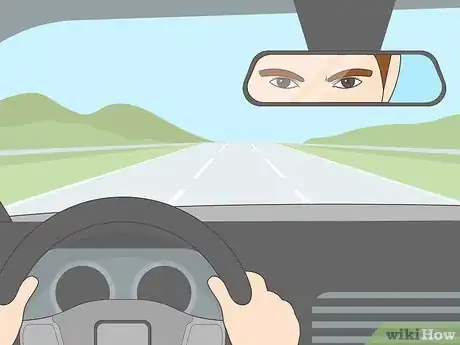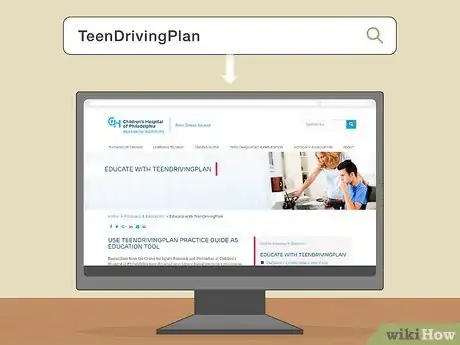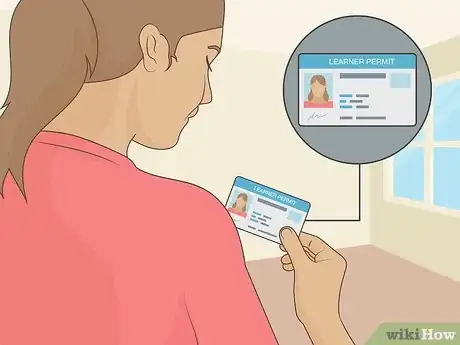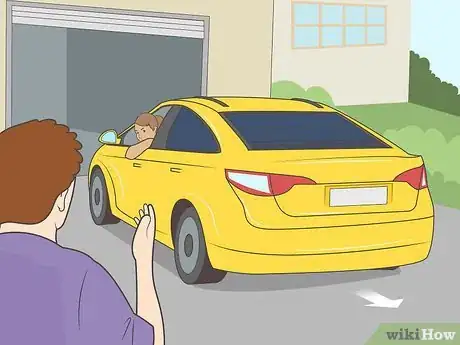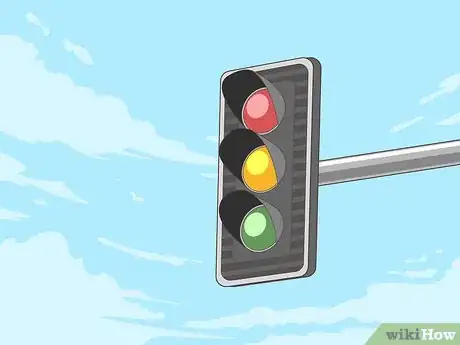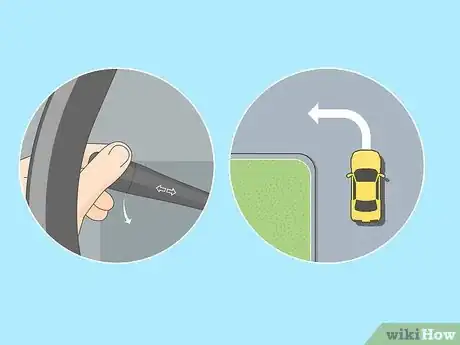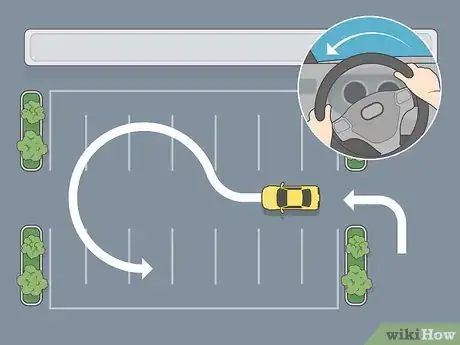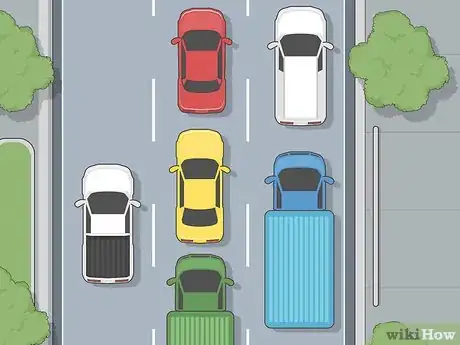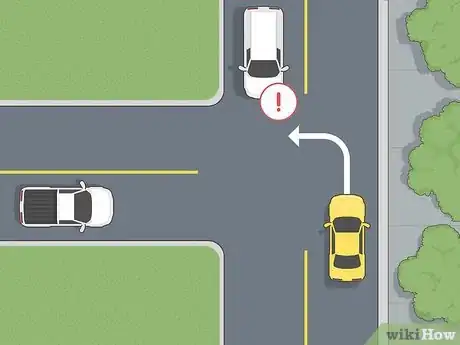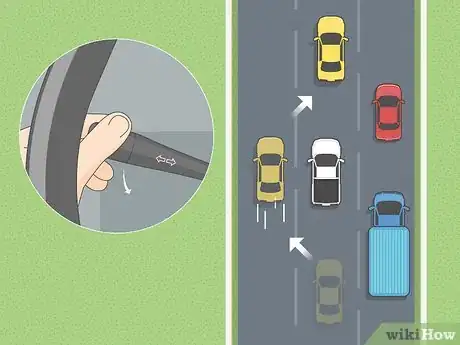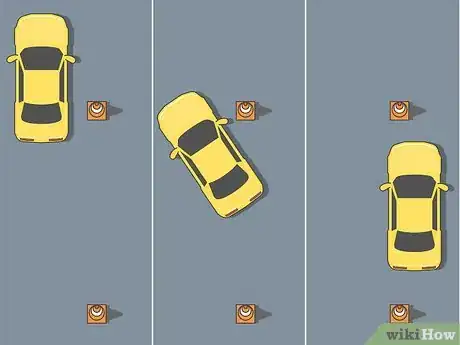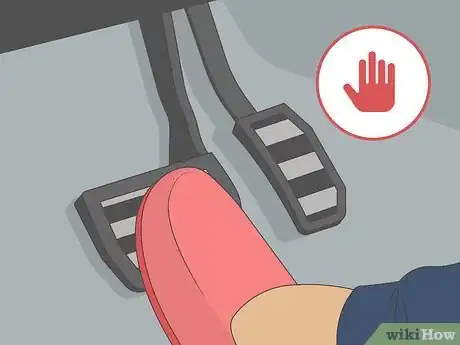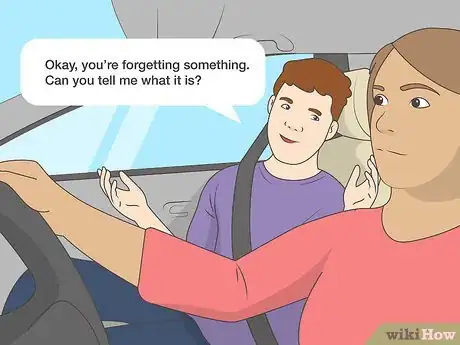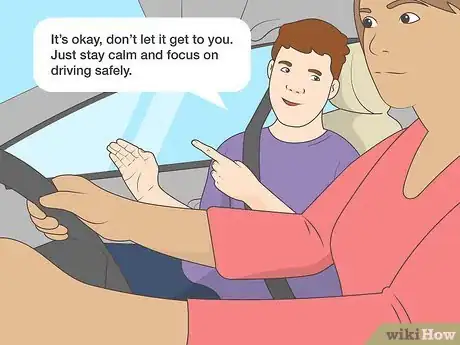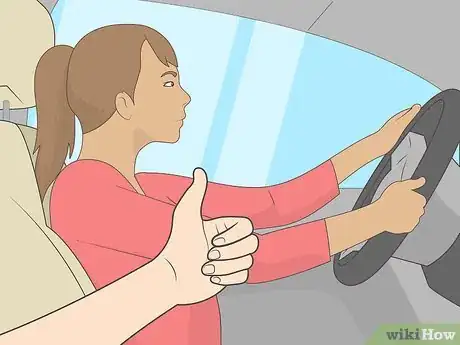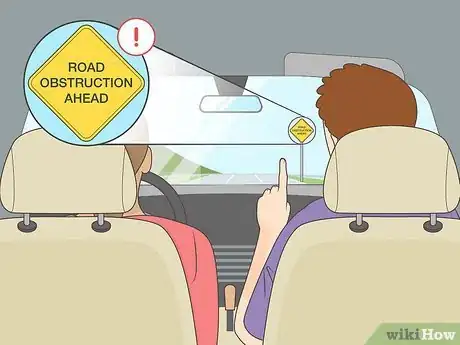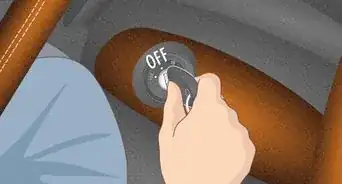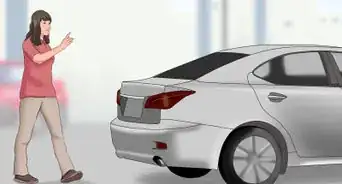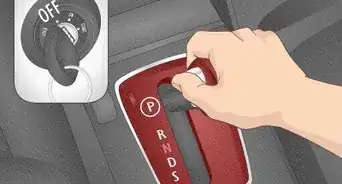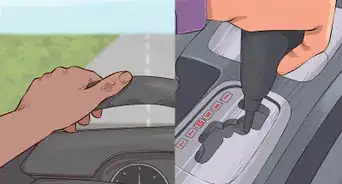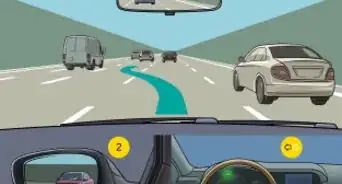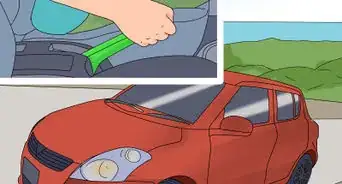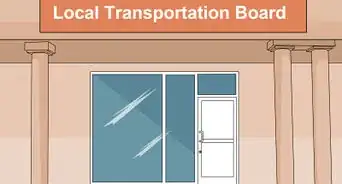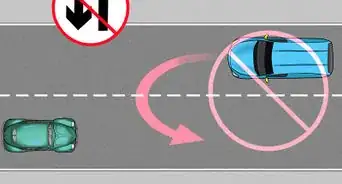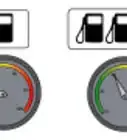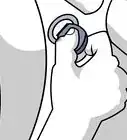This article was co-authored by Simon Miyerov. Simon Miyerov is the President and Driving Instructor for Drive Rite Academy, a driving academy based out of New York City. Simon has over 8 years of driving instruction experience. His mission is to ensure the safety of everyday drivers and continue to make New York a safer and efficient driving environment.
There are 7 references cited in this article, which can be found at the bottom of the page.
wikiHow marks an article as reader-approved once it receives enough positive feedback. This article received 17 testimonials and 90% of readers who voted found it helpful, earning it our reader-approved status.
This article has been viewed 486,456 times.
Ah, the joy of the open road! For many, learning how to drive means more freedom and more independence. Driving is almost a necessity in the modern world, but it can still risky. That’s why it’s important that people learn how to drive safely so they can avoid potential accidents. If you’re teaching a beginner how to drive, that’s great! You can help ensure that they’re prepared for the road. And by following a few basic principles (and with a little bit of patience), it doesn’t have to be too difficult of a task.
Steps
Explaining the Basics
-
1Start at home and explain the controls. Explain to your beginner driver how to start the vehicle and shift it into the gear. Show them how to use the controls such as the windshield wipers, turn signals, and air-conditioning. Go over basic maintenance info as well such as refueling, checking tire pressure, checking oil levels, and topping up windscreen washers. Take some time to explain what everything does and allow them to ask you questions.[1]
- Review both the drivers' handbook and the owner's manual for the car.
- Because you drive often, you may not realize just how many controls there are in your vehicle! For instance, a brand new driver may have no idea what hazard lights are for and how to turn them on.
-
2Talk about the importance of checking your mirrors. While you’re sitting in the parked vehicle, show your student how to adjust the rearview and side mirrors. Explain that it’s very important that you check your mirrors before you back out or change lanes.[2]
- Going over these ideas before your driver even gets behind the wheel will help reinforce them.
Advertisement -
3Show them to place their hands at 3 o’clock and 9 o’clock on the wheel. Keep both of your hands on the wheel to set a good example. Your student will watch and do as you do! Don’t use the outdated 10 o’clock and 2 o’clock positions on the wheel, which don’t allow for as much control and turning ability as the 3 o’clock and 9 o’clock positions.[3]
-
4Drive around with your student and explain what you’re doing as you drive. Model good driving behavior by driving around with your student. Follow all of the traffic laws and explain what you’re doing so your student can recognize and understand it. There are a ton of driving laws and practices to follow, and by demonstrating them yourself, your student will see the right way to follow them.[4]
- For instance, as you’re approaching a light, you could say, “Okay, so the light just turned red, which means we have to stop until it’s green, so I’ll put my turn signal on so everyone knows I’m going to turn when the light is green.”
-
5Point out signs, lights, and street markings and explain what they mean. As you drive your student around, point to speed limit signs, stop signs, and different street signs you see along the way. Talk about what they mean and what a good driver needs to do in order to obey them.[5]
- For example, you could say, “Okay, see how the speed limit is changing? That means we have to lower our speed and that school zone sign means we have to keep an eye out for school busses and kids.”
-
6Tell your student to stay focused and avoid distractions. Talk about how it’s important to keep your eyes on the road at all times. Looking away for more than 2 seconds is enough time to cause an accident. Discuss the importance of avoiding distractions and putting away your phone so you aren’t tempted to text or respond to messages.[6]
- Tell your student if they need to make a call or send a message, no problem. Just pull over somewhere safe when you do it.
-
7Use a web-based driving program to help your student learn the rules. Look up programs such as TeenDrivingPlan and State Farm’s Road Trips, which offer instructional videos, practice scenarios, and other educational tools. Have your student driver try out the program for a safe way to learn and practice driving as well as become more familiar with the rules of the road before they even get behind the wheel.[7]
- You can find TeenDrivingPlan here: https://www.teendriversource.org/advocacy-education/educate-with-teendrivingplan.
- Some insurance companies offer web-based programs you can use for free. Check out your company’s website to see if they have one you can use.
Starting out with a Student Driver
-
1Help your student get their learner’s permit. In order to practice driving on public roads, your student will need to have the proper permit. Sign them up for a driver’s education course and review the rules of the road with them to help them prepare. Take them to your local motor vehicle’s office and let them take the test to earn their permit.[8]
- Once your student has a permit, they can legally drive with a licensed adult in the car.
- Keep a log of driving practice hours if one is required as part of the licensing process.
-
2Spend about 30 minutes on each lesson. Stick to relatively short lessons about 3-4 times a week so your new driver is more likely to retain everything you go over. You also don’t want to overwhelm them with too much information, and 30-minute practice sessions can help prevent that from happening.[9]
- The more your student driver practices, the better they’ll get, so try to do it often.
-
3Use your driveway to practice backing out. Have your student driver get behind the wheel while your vehicle is parked in the driveway. Get them to put on their seatbelt and start up the engine. Make sure they check their mirrors and look behind them and let them practice driving in reverse and backing out of the driveway.[10]
- They can also practice driving forward back into the driveway.
-
4Choose a road with a traffic light for your student to practice. As they approach the light, if it turns yellow, tell them to start slowing down. When the light turns red, they need to come to a complete stop until it changes to green. If the light changes to yellow as they’re passing through the intersection, explain that they can continue driving through it.[11]
-
5Take it slow and allow your student to get comfortable behind the wheel. Have your student driver stick to a low speed. Somewhere around 20 mph (32 kph) will allow them to maintain control of the vehicle and get used to driving.[12]
- Driving slow will also build up their confidence as they get more comfortable.
-
6Make sure your student drives on the right side of the road. Whether the rules of the road dictate that your vehicle should be in the left or right lane, make sure your student sticks to the correct side. Have them develop good driving habits by staying within the lane as they drive.[13]
- They can move into the other lane whenever they need to pass a vehicle, but generally, they should stay in the right lane.
-
7Tell them to use their turn signal whenever they plan to turn or change lanes. Help your student develop the habit of always using their turn signal. As they’re approaching a turn, gently remind them. If you see them forget to put on their signal, mention it to them. Eventually, they’ll get better at remembering to do it.[14]
- If they’re stopped at a red light, you can have them make a right turn if it’s legal. But make sure they use their turn signal!
- Additionally, if a vehicle in front of you has its turn signal on, tell your student driver that they need to be prepared to slow down and stop when the vehicle turns.
Practicing Various Types of Driving
-
1Drive in circles in a parking lot to practice turning. Stick to empty parking lots for turns, which can be tricky to learn. Have your student driver turn the wheel and get used to how a vehicle responds. Use parking spots as targets to practice turning and parking.[15]
- Turning can often be the toughest thing to learn as a new driver. Using an empty parking lot will take some of the stress off of your student driver.
-
2Drive on progressively harder roads as your student improves. Start off on quiet streets to get your student driver used to handling a vehicle on the road. As they get better at driving, start moving onto streets with more traffic. Eventually, have them get onto a highway or interstate so they can get comfortable driving at higher speeds.[16]
- Check in with your student to make sure they feel comfortable moving onto a more challenging driving scenario. Don’t push them too hard if they aren’t ready.
-
3Practice making turns into oncoming traffic and merging on highways. Making left turns into oncoming traffic can lead to accidents if they aren’t done properly. Have your student driver put on their turn signal and wait until the road is clear before they make their turn. Merging into a busy highway is also a tricky maneuver. Get your driver to put on their turn signal and calmly merge into the lane.[17]
-
4Get your student to change lanes on a highway. When you’re driving on a highway, have your student practice switching lanes by putting on their turn signal. If the lane is clear, tell them they can change lanes. Once they’re in the new lane, they can turn off their turn signal.[18]
- Explain that if a vehicle is driving slowly in front of them, they can pass them by putting on their turn signal, changing lanes to pass the vehicle, then getting back into the original lane.
-
5Set up 2 cones and have your student practice parallel parking. Use a parking lot or an empty road and set out 2 plastic cones about the length of your vehicle. Allow your student driver to take their time and try as many times as they need to in order to learn and get comfortable parallel parking.[19]
-
6Have your student practice quick stops so they’re used to the feeling. Ask them to drive about 5 mph (8 kph) and then step on the brakes to come to an immediate stop. The jerking motion can be surprising to new drivers, and it’s important that they know what to expect if they ever have to make a quick stop while they’re out on the road.[20]
Communicating with Your Student
-
1Stay calm and be patient as your student practices. Your student driver going to make a few mistakes. It’s important that you correct them without getting angry or it could ruin their confidence. Use every mistake they make as an opportunity to gently correct them so they can learn and improve.[21]
- For instance, if your student driver forgets to use their turn signal or check their mirrors, you could say something like, “Okay, you’re forgetting something. Can you tell me what it is?
-
2Keep a cool head whenever your student makes a mistake. Driving can be a scary experience for your student, so you don’t want to get them extra flustered by getting irate or upset whenever they make mistakes. Instead, calmly correct them and tell them that it’s going to be okay so they don’t feel overwhelmed.[22]
- For instance, if your student forgets to come to a complete stop at a stop sign or another driver is rude and aggressive, tell them something like, “It’s okay, don’t let it get to you. Just stay calm and focus on driving safely.”
-
3Praise your student when they do well. In addition to corrections, make sure you tell your student when they do something right! Tell them that they’re doing a great job and help build them into more confident drivers.[23]
- For example, if they use their turn signal without you reminding them, you could say something like, “Nice job with the signal, great work.”
-
4Point out hazards so they can learn to recognize them. Teach your student driver to keep an eye out for hazards so they can be better equipped to avoid them. Whenever you notice road hazards, bring it to their attention and explain what they should do.[24]
- For instance, if you see an obstruction in the road or a large pothole, identify it to your student driver. You could say something like, “Hey, do you see that in the road? You need to slow down and go around it to avoid it.”
- Explain that they need to turn on their headlights if it’s raining or nighttime. They also need to switch on their wipers if it’s raining.[25]
Community Q&A
-
QuestionHow long does it take to learn driving?
 wikiHow Staff EditorThis answer was written by one of our trained team of researchers who validated it for accuracy and comprehensiveness.
wikiHow Staff EditorThis answer was written by one of our trained team of researchers who validated it for accuracy and comprehensiveness.
Staff Answer wikiHow Staff EditorStaff AnswerWith good and proper instruction, 1 to 3 full days of tuition may be enough for an attentive student to learn the basics of operating a car effectively. However, it takes a lot longer for the "muscle memory" and "situational awareness" of driving as a skill to sink in, involving not only mastering the mechanisms of the car but also aligning the driving actions with concentrating on the road, heeding traffic, watching for and appropriately reacting to hazards and learning defensive driving skills, etc. This is why most jurisdictions require a minimum amount of training hours before it is considered that you actually know how to drive. Just remember––driving isn’t just about the car itself, it’s about being a good road user and staying safe.
wikiHow Staff EditorStaff AnswerWith good and proper instruction, 1 to 3 full days of tuition may be enough for an attentive student to learn the basics of operating a car effectively. However, it takes a lot longer for the "muscle memory" and "situational awareness" of driving as a skill to sink in, involving not only mastering the mechanisms of the car but also aligning the driving actions with concentrating on the road, heeding traffic, watching for and appropriately reacting to hazards and learning defensive driving skills, etc. This is why most jurisdictions require a minimum amount of training hours before it is considered that you actually know how to drive. Just remember––driving isn’t just about the car itself, it’s about being a good road user and staying safe. -
QuestionHow do I start learning to drive?
 wikiHow Staff EditorThis answer was written by one of our trained team of researchers who validated it for accuracy and comprehensiveness.
wikiHow Staff EditorThis answer was written by one of our trained team of researchers who validated it for accuracy and comprehensiveness.
Staff Answer wikiHow Staff EditorStaff AnswerThe best way to start is to find out what the local road rules are and learn these, then sit the learner’s test that will enable you to actively learn the necessary driving skills. Next, decide who will instruct you ––family, friends or paid instructors? Each teacher has benefits and drawbacks, such as time availability, emotional toll and financial costs. It's important to learn from someone you feel comfortable with and who has the competency and patience to teach you correctly, as it's crucial to learn good driving techniques and habits from the outset.
wikiHow Staff EditorStaff AnswerThe best way to start is to find out what the local road rules are and learn these, then sit the learner’s test that will enable you to actively learn the necessary driving skills. Next, decide who will instruct you ––family, friends or paid instructors? Each teacher has benefits and drawbacks, such as time availability, emotional toll and financial costs. It's important to learn from someone you feel comfortable with and who has the competency and patience to teach you correctly, as it's crucial to learn good driving techniques and habits from the outset. -
QuestionWho can sit with a learner driver?
 wikiHow Staff EditorThis answer was written by one of our trained team of researchers who validated it for accuracy and comprehensiveness.
wikiHow Staff EditorThis answer was written by one of our trained team of researchers who validated it for accuracy and comprehensiveness.
Staff Answer wikiHow Staff EditorStaff AnswerThis will depend on your jurisdiction's regulations concerning the teaching of driving but usually the person instructing must have a full driver’s license and have a set level of years of driving experience (often it's a minimum of 3 years). There may be other requirements, such as proof of eyesight suitability. The learner's permit documentation should clarify the requirements for the person sitting with the learner driver, or ask the office issuing your learner's permit or your local transport department to confirm these for you.
wikiHow Staff EditorStaff AnswerThis will depend on your jurisdiction's regulations concerning the teaching of driving but usually the person instructing must have a full driver’s license and have a set level of years of driving experience (often it's a minimum of 3 years). There may be other requirements, such as proof of eyesight suitability. The learner's permit documentation should clarify the requirements for the person sitting with the learner driver, or ask the office issuing your learner's permit or your local transport department to confirm these for you.
Warnings
- Don’t force a new driver into situations if they aren’t ready. Save the highways and interstates until they’re confident drivers.⧼thumbs_response⧽
References
- ↑ https://driversed.com/trending/lets-go-practice-driving-in-a-parking-lot
- ↑ https://driversed.com/trending/lets-go-practice-driving-in-a-parking-lot
- ↑ https://www.popularmechanics.com/cars/how-to/a12445/15-tips-for-teaching-a-teenager-to-drive/
- ↑ https://www.washingtonpost.com/news/parenting/wp/2018/05/24/stressed-out-about-teaching-your-teen-to-drive-experts-share-4-things-to-keep-in-mind/
- ↑ https://driving-tests.org/beginner-drivers/rules-of-the-road/
- ↑ https://www.popularmechanics.com/cars/how-to/a12445/15-tips-for-teaching-a-teenager-to-drive/
- ↑ https://www.wsj.com/articles/better-ways-to-teach-teens-to-drive-1413915957
- ↑ https://driving-tests.org/learners-permit/
- ↑ https://www.rse.org.au/checklist-for-teaching-someone-how-to-drive/
- ↑ https://driversed.com/trending/lets-go-practice-driving-in-a-parking-lot
- ↑ https://driving-tests.org/beginner-drivers/rules-of-the-road/
- ↑ https://driversed.com/trending/lets-go-practice-driving-in-a-parking-lot
- ↑ https://driving-tests.org/beginner-drivers/rules-of-the-road/
- ↑ https://driversed.com/trending/lets-go-practice-driving-in-a-parking-lot
- ↑ https://www.popularmechanics.com/cars/how-to/a12445/15-tips-for-teaching-a-teenager-to-drive/
- ↑ https://www.wsj.com/articles/better-ways-to-teach-teens-to-drive-1413915957
- ↑ https://www.wsj.com/articles/better-ways-to-teach-teens-to-drive-1413915957
- ↑ https://driving-tests.org/beginner-drivers/rules-of-the-road/
- ↑ https://www.popularmechanics.com/cars/how-to/a12445/15-tips-for-teaching-a-teenager-to-drive/
- ↑ https://driversed.com/trending/lets-go-practice-driving-in-a-parking-lot
- ↑ https://www.wsj.com/articles/better-ways-to-teach-teens-to-drive-1413915957
- ↑ https://www.wsj.com/articles/better-ways-to-teach-teens-to-drive-1413915957
- ↑ https://www.popularmechanics.com/cars/how-to/a12445/15-tips-for-teaching-a-teenager-to-drive/
- ↑ https://www.wsj.com/articles/better-ways-to-teach-teens-to-drive-1413915957
- ↑ https://driving-tests.org/beginner-drivers/rules-of-the-road/
